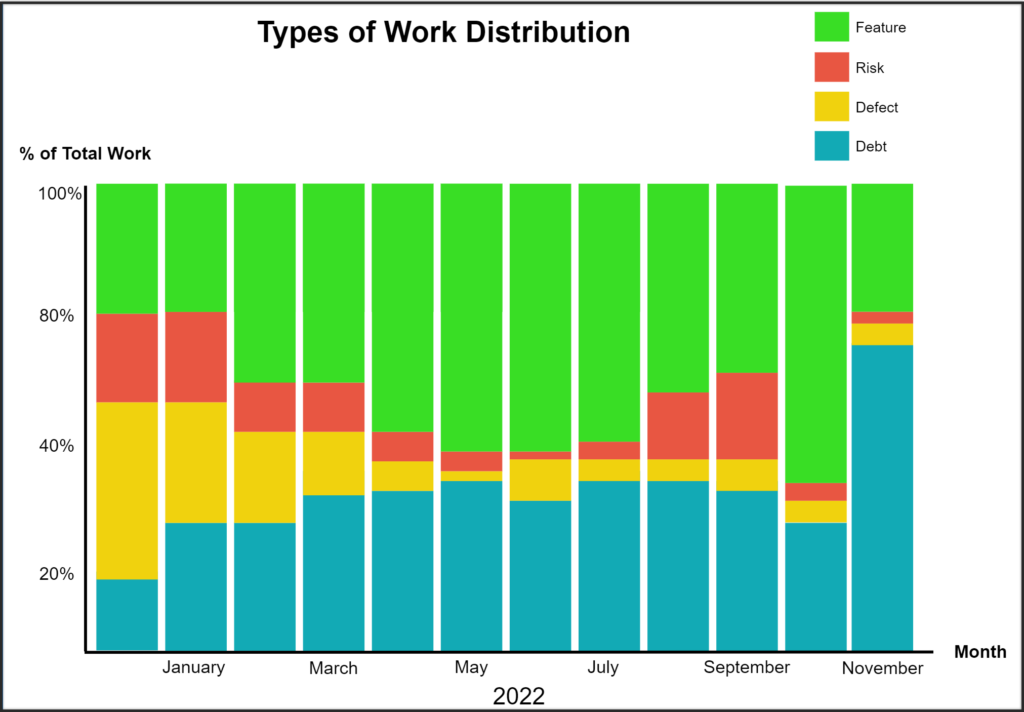4 min read

What does it mean to “deliver value”? Defining value deserves its own focus. This article picks up at the point of the delivery backlog, assuming that your product leadership has identified the customers’ or organization’s needs, prioritized, defined, and outlined the value for the business and its customers, created a business case for the investment (including impact mapping and cost analysis) and defined the expected outcomes from changes or improvements to their digital product.
What problem are we trying to solve?
The outcomes are not kept from the teams, ensuring we are closing the loop.
This article dives into the crucial topic of measuring the outcomes following the release of enhancements or changes and informing the team(s) that delivered the work. Did the change or new feature deliver the expected value? Are we delivering the right things? Knowing the outcome or level of success motivates team members and bolsters their purpose. Teams can use the results to glean valuable insights even when they do not meet expectations.
Fast and agile delivery is not the end goal; value is the end goal
“Making the wrong thing faster only makes us wronger.” 1
In software delivery, it is essential to remember that delivery is not the end goal; value is. It is easy to fall into the trap of delivering software quickly and efficiently. Still, it is all for nothing if it does not provide value to the customer or organization. Delivering unwanted features can be a sad waste of productivity and a misuse of talent.1 These are just a couple of reasons why it is crucial to understand what value means in software delivery and how to measure it.
Organizations need to understand the real-world impact of their digital product changes, so measuring its outcome value, determining the return on the investment, and learning from outcomes are critical. Unfortunately, accurately tracking and reporting outcomes and value returned can be complex due to several challenges.
The challenges of measuring the final outcome of digital changes
What are the meaningful outcome metrics? Are such metrics communicated down to the delivery team level? Do companies practicing OKRs report on the final outcome of those OKRs?
First, many organizations need more tools to help them measure the value of outcomes from software delivery. The lack of tools and data insights can make it challenging to track and report on the success of the delivered changes.
Secondly, measuring the actual ROI requires significant time and effort. It is essential to determine the impact of digital product changes on the business or customer; this can be a complex process. This work may require additional resources, like data analysts or business intelligence tools.
Third, the impact of the software changes may take time to become apparent. It might take months or even years to see the actual effect of the changes delivered on the business or customer. Time duration can make it challenging to accurately track and report the real degree of success or value delivered within the allotted time to influence teams.
Fourth, accounting for the success of an outcome and the value it returns may require additional resources and a shift in the organization’s mindset to prioritize measuring this work.
Finally, there could be pushback when inquiring about the value of the product or platform changes teams delivered. To ensure that the value outcome is consistently tracked and reported, organizations must determine who is best suited for monitoring and reporting the value outcomes of what the teams deliver.
Teamwork and transparency at the team level
For those using Scrum or Kanban or similar lifecycle practices and tools, consider adding elements to the delivery team’s Epics, Features, and possibly User Stories.
Why: Why are we working on this?
Value: Short description of the expected outcome for the organization or customers.
These can align with OKRs for those using them.
Benefits:
- Shared understanding, alignment, purpose driven development, and delivery.
- Documenting the why and value enables team alignment and autonomy and increases team member engagement.
- A more precise understanding of priority reasoning.
- Learn from the outcomes (gain insights).
Challenges:
- Tools to help measure the outcome.
- Measuring the outcome requires significant time and effort.
- The impact of the change(s) delivered may take time to become apparent, ranging from weeks to months or even longer.
Closing the loop with the delivery teams:
- Schedule outcome retrospectives with teams.
- Document the outcome(s) details to Jira, Azure DevOps, Rally, or whatever tool your teams use.
Final thoughts
In many organizations, technology leadership must measure and report on the performance of the software delivery teams.2 Do your delivery teams receive feedback on their work’s value to the organization or customer? Are they aware of the impact and success of their efforts after they deliver on a change? If not, it’s time to reevaluate your approach.
By providing your teams with regular feedback and, more importantly, the overall results or outcomes from their work, you can increase their motivation and a sense of purpose, leading to a more engaged and productive workforce.
If you aren’t doing so already, start tracking, measuring, and reporting on your team’s outcomes to align your business objectives and change investments with their performance, avoid costly and wasteful overproduction, learn from the changes made to your delivered product, and achieve greater success. Are your teams “delivering value”?
Related articles:
- Value part 1: Maximizing Technology Team Effectiveness: Insights from a CEO Conversation
- Measuring delivery teams: Finally, Metrics That Help: Boosting Productivity Through Improved Team Experience, Flow, and Bottlenecks.
References:
- Smart, Jonathan [@jonsmart]. “From Faster to Sooner” Twitter, 26 June 2021
Poking Holes
I invite your perspective to analyze this post further – whether by invalidating specific points or affirming others. What are your thoughts?.
Let’s talk: phil.clark@rethinkyourunderstanding.










